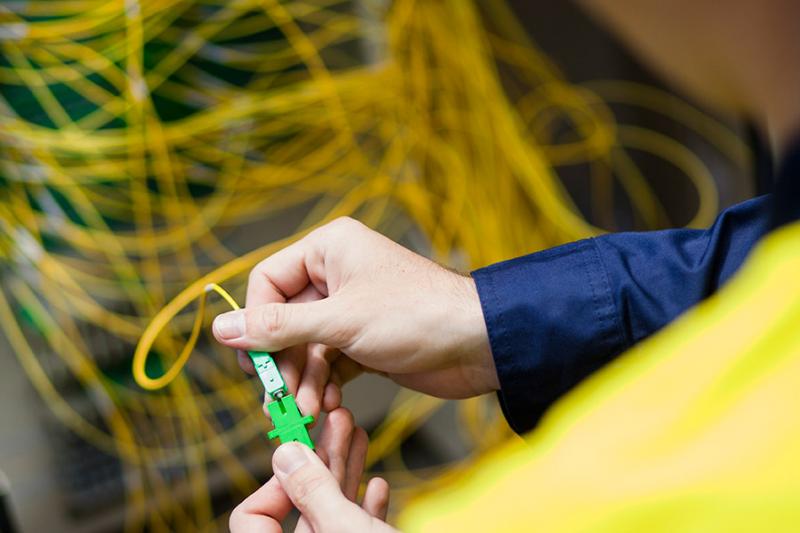While it will invest in rolling fibre out in Fibre to the Node areas covering some two million households over the next few years, NBN Co is predicting a much smaller uptake of faster, fibre broadband services.
In fact, NBN Co’s new corporate plan – released yesterday alongside Minister Fletcher’s speech to the NPC – reveals its prediction that just 400,000 properties will take up the free fibre upgrade by mid 2024.
Further in the detail gives us a timeframe for when the fibre upgrades will be available; NBN Co forecasts that 2022-23 will see some 200,000 properties upgrade to full fibre connections, with a further 200,000 to join them the following financial year. This means customers will be waiting a little while before those fibre connections will be available.
IT News questioned NBN Co on the figures yesterday, and confirmed our suspicions – fibre upgrades won’t be available until June 2021 at the earliest, and most likely closer to the end of the year.
If you want fibre faster than that, you’ll be paying for it yourself. Otherwise, let’s just hope your existing connection is good enough for your current needs and for the next 18 months or so.





Who are the idiots coming up with these fancy predictions? They are saying only 400k will sign up for higher speed internet when most of us are working from home and will be doing so with this pandemic and change in work habits.
Those “idiots” would be the NBN Co, who can see exactly what services are being ordered where, so they might have a good picture of the demand.
I already have FTTP so I’m all good and have 1gbps speeds. About time should have done it at the start of rolling out nbn.
Can you imagine how different Australia would have been if Labor hadn’t added speed tiers to the NBN?
Instead Labour expected <1% to have 1Gbps in 2026 and we have MTM.
I just wondering how much does a gigabit plan cost at the moment, as I can’t imagine it’s cheap and will the availability of gigabit decrease the price?
About 150 a month give or take. You’d expect with more of them out there the price may drop a little.
They still don’t get it.
The whole point is 100 should be standard. It is plenty for most right now but that should be the minimum. If you want to go to 1gb you just pay the extra. It should work.
The mess that the libs made is just going to increase the cost of services and reduce the quality.
This. The thing now is that to get this “free” upgrade, customers need to commit to paying for 1Gbps plans, if I’m reading things correctly. I don’t need a 1Gbps plan, I probably never will, and I’m not entirely sure I want to pay that much per month. But I’m definitely not happy with the <35Mbps that my FTTN connection maxes out at, assuming few other users on the same node. So I’ll be signing up for this connection ASAP because the increased monthly cost will still be less than paying for my own FTTP connection at an initial NBN… Read more »
there were going to be benefits to the original rollout via having 90% FTTP and overall, half the number of technologies used. being able to do things like use one stream of a HD+ Video stream for thousands of people being one (they all grab the same optical broadcast instead of their own individual bandwidth needing to be allocated at server end) – the ubiquity would make it a fair assumption at big town and all city locations that workers have the ability to do low latency, high resolution/bitrate conferencing and general work from home
The mess was created by Labor adding speed tiers to the NBN.
The Liberal’s action back in 2013 could be justified by the fact that 85% of FTTP connections were 25Mbps or slower. The only reason speeds have increased is the LNP price cuts resulted in RSPs moving customers up speed tiers to maintain revenue rather than discounting prices.
Considering Labor predicted <1% would connect at 1Gbps, 400,000 an order of magnitude higher than Labor expected.
I’m not sure it’s entirely reasonable to compare an estimate of users wanting 1Gbps connections made a decade ago with one made now, given the scale of change that’s happened in between.
The point is that if Labor hadn’t added speed tiers, today every fixed connection would be 1Gbps.
there are cancelled initiatives based on that though. the nation and its companies and corporations can have different expectations when there is a 97% chance a worker has fibre to the home
we also ended up with not enough FTTP to market this (see link) broadly to consumers https://www.itnews.com.au/news/nbn-co-shelves-multicast-expansion-for-fixed-network-480770
Mutlicast is only useful if you are broadcasting the same streamed content to a large group of people. Most people consume content via on-demand streaming, that means it is limited to live streaming of a few large sporting events with broad appeal (e.g. AFL & Olympics).
MTM didn’t kill multicast. Netflix killed multicast and that should have been obvious back in 2008.